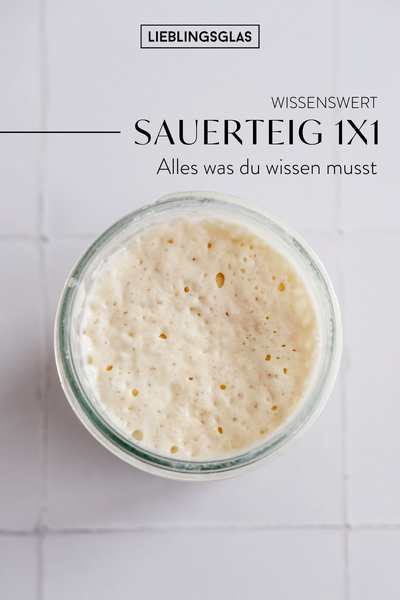Sourdough 1x1: The Basics for Perfect Baking
Sourdough is the traditional secret of baking that has been used for centuries to add delicious flavors and improve digestibility. But for beginners, the subject can be confusing. Let's take a look at the basic concepts of sourdough and clear up any questions you may have.
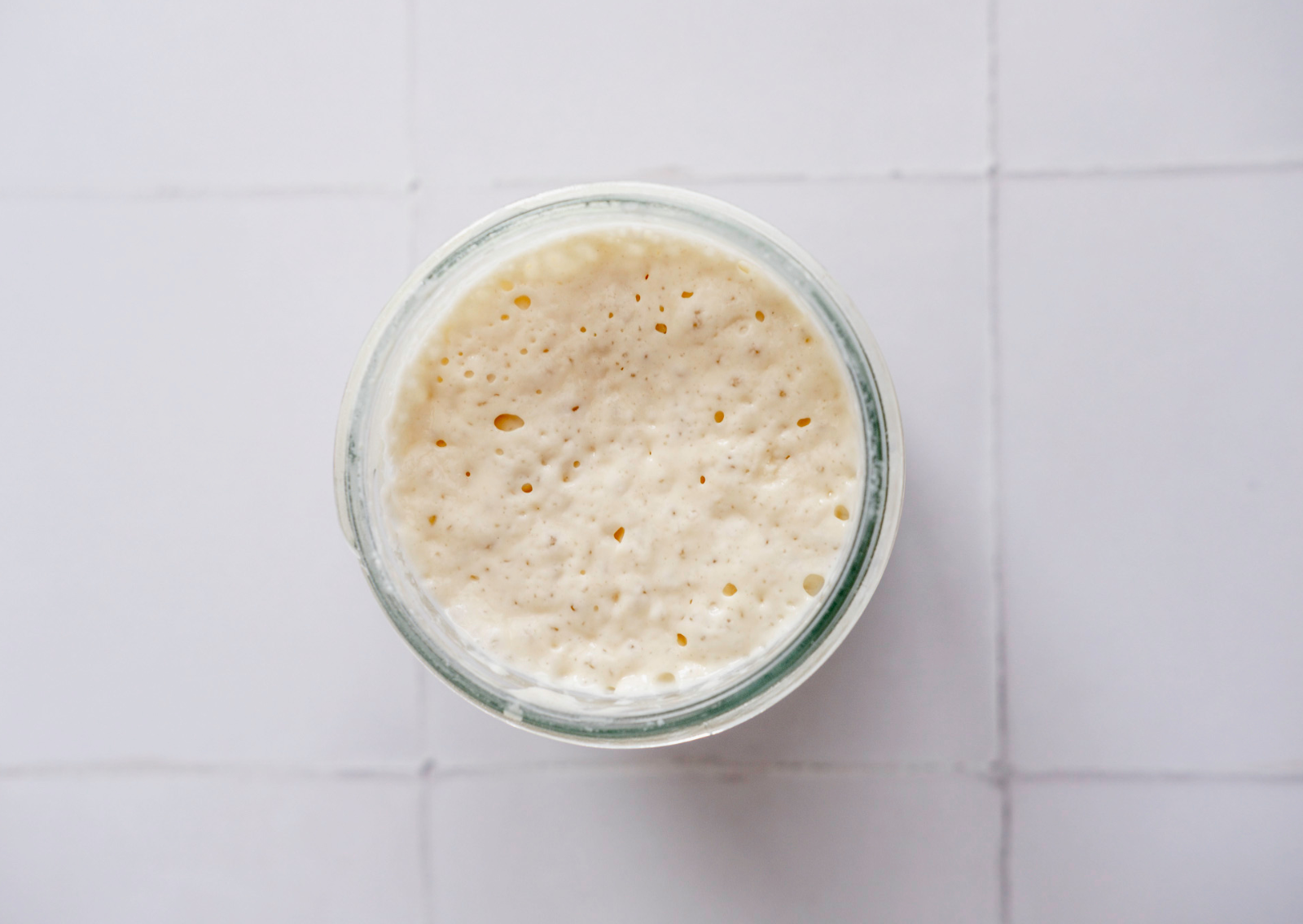
What is sourdough?
Sourdough is a mixture of flour and water that is activated by natural fermentation with the help of wild yeasts and lactic acid bacteria. These microorganisms are present in the environment and form a culture that ferments the dough and gives it its characteristic flavor.
What is a sourdough starter?
A sourdough starter, also known as sourdough starter or sourdough culture, is the basic mixture of flour and water used to make sourdough. This starter culture is the base for the sourdough and contains a variety of wild yeasts and lactic acid bacteria that are responsible for fermenting the dough.
How to make a sourdough starter?
Making a sourdough starter follows a simple process: you mix a certain amount of flour and water, leave it in a warm place, and regularly feed it with more flour and water to keep the microorganisms active. Over time, the sourdough starter develops into a living culture that can be used to make sourdough.
In addition to making traditional sourdough, we also offer a sourdough starter set in our shop. This set contains a 100% organically certified dried wheat sourdough starter. The advantage of this is that you can start making the dough within about 48 hours without having to wait days for the starter to develop.
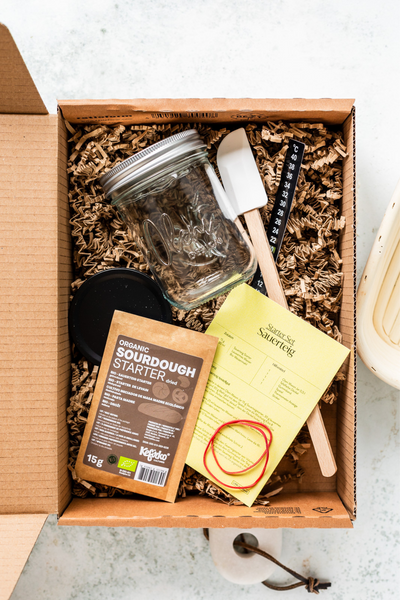
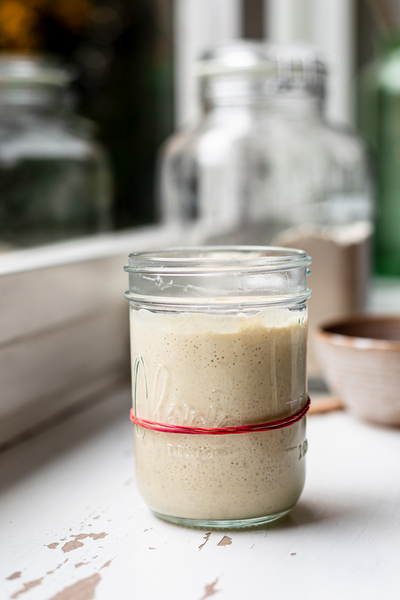
What is the difference between starter, leavening, sourdough and sourdough surplus?
The starter is the original mixture of flour and water for the sourdough. The leaven is a small amount of active sourdough that is used for a new loaf of bread. The sourdough starter is the main dough for bread or pastries. The leftover sourdough is the remaining amount of sourdough after the starter is removed, which can be used for future baking projects.
Why is sourdough healthy?
Sourdough has many health benefits. Fermentation makes the nutrients in the flour more available and digestible. In addition, the lactic acid bacteria produce probiotic compounds that can promote gut health. Sourdough bread also has a lower glycemic index than regular bread, which means it is less likely to cause blood sugar levels to rise.
How is sourdough used?
Sourdough can be used to make a variety of baked goods, including bread, rolls, pizza, pancakes, and even cakes. The sourdough starter is mixed into the dough and acts as a natural leavening agent, giving the baked goods their characteristic flavor and texture.
How do you care for sourdough?
Sourdough needs regular maintenance to remain active. This means feeding it regularly by adding a certain amount of flour and water and stirring it well. Sourdough should also be stored in an airtight container in the refrigerator to slow down its activity when not in use.

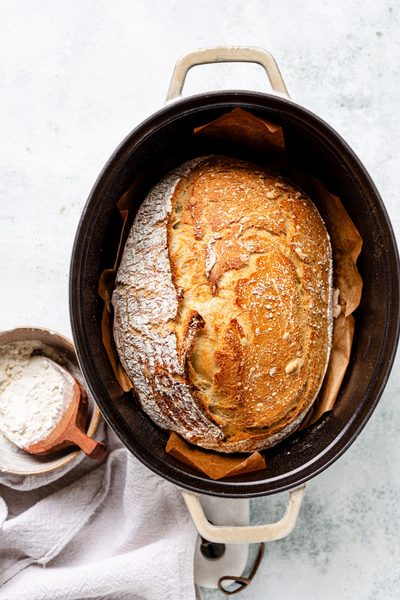
Important terms briefly explained: Our sourdough ABC
Autolyse : A resting phase in the bread-making process during which flour and water are mixed together before other ingredients such as salt and sourdough are added. This phase allows for better water absorption and gluten development in the dough.
Baker's yeast : A special yeast often used to speed up the fermentation process and allows for faster fermentation compared to wild yeasts found in sourdough.
Couching : The process of shaping dough pieces into loaves of bread by first cutting and folding them with a dough scraper or blade to increase the tension in the dough.
Stretching and folding : A technique in which the dough is periodically removed from the bowl, stretched and folded during the fermentation phase to improve the structure of the dough and promote fermentation.
Elasticity : The ability of the dough to be stretched during kneading without tearing, due to the development of gluten strands.
Freshkeeping : The process of storing bread in a bread basket or bread box after baking to preserve its freshness and maintain a crispy crust.
Proofing basket : A basket partially lined with cloth used during fermentation to give the dough its shape and help it hold its tension while it rises.


Yeast : A microbial organism responsible for fermentation in sourdough and producing carbon dioxide that causes the dough to rise.
Incubation : The process of cooking or fermenting dough in a warm environment to promote the activity of yeasts and bacteria.
Juggling : A technique in which pieces of dough are thrown and rotated by hand during shaping to achieve a round shape and increase tension in the dough.
Crust : The outer layer of bread or other baked goods, formed by the evaporation of water during baking and having a crispy texture.
Lame : A tool used when cutting dough pieces before baking to score the surface and promote the dough's rise. It consists of a thin handle and a sharp blade that allows a precise cut and gives the bread an attractive shape.
Microorganisms : Small, living organisms such as yeasts and bacteria that are present in sourdough and are responsible for fermentation. These microorganisms play a crucial role in converting sugars into carbon dioxide and lactic acid, which makes the sourdough rise and gives it its characteristic flavor.
Overnight fermentation : A longer fermentation phase carried out overnight in the refrigerator to improve the flavour and texture of the sourdough pastry.
Surface texture : The external appearance of bread or other baked goods, which is influenced by the cutting of the dough, the method of baking and other factors.
Spot yeast : A type of yeast that occurs in small dots or clusters in sourdough and is responsible for the production of carbon dioxide during the fermentation process. These types of yeast are often responsible for the characteristic looseness and structure of sourdough bread.
Soaker : A mixture of flour and water prepared before the main dough to help improve the water absorption and texture of the dough.
Wholemeal rye flour : A type of flour made from ground rye and often used for making sourdough due to its high nutritional content and good baking properties.
Sourdough starter : See sourdough starter. A mixture of flour and water used to make sourdough and containing a live culture of wild yeasts and lactic acid bacteria.
Dough resting : A phase in the baking process during which the dough must rest for a certain period of time after kneading to relax the gluten strands and allow fermentation. This resting period contributes to the development of flavor, texture and aroma in the sourdough.
Folding : The process of gently mixing ingredients into the dough to maintain the airiness and structure of the sourdough baked goods.
Pre-dough : A mixture of flour, water and sourdough starter that is made before the main dough and helps develop flavor and structure.
Water bath : A method in which a container of water is placed in the oven to create high humidity during baking and promote a crispy crust.
Secondary fermentation : A further fermentation phase that takes place after the dough has been shaped to allow the dough to rise and increase in volume before it is baked.
We hope this post has helped deepen your understanding of sourdough and inspired you to try your first sourdough starter. Have fun experimenting in the kitchen and enjoying delicious, homemade sourdough baked goods!
